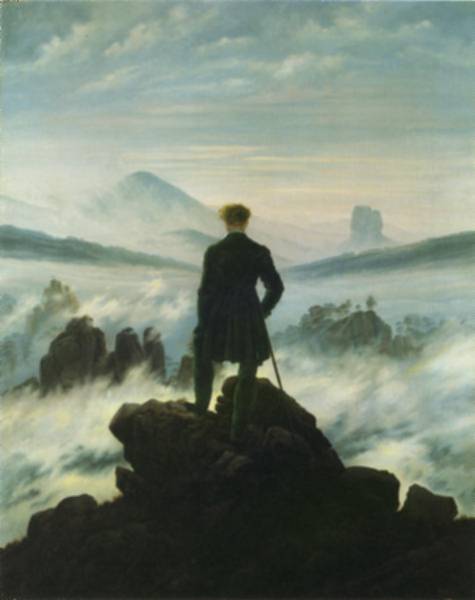"The development of the concept of the sublime as an aesthetic quality in nature distinct from beauty was first brought into prominence in the 18th century in the writings of Anthony Ashley-Cooper, third earl of Shaftesbury and John Dennis, in expressing an appreciation of the fearful and irregular forms of external nature, and Joseph Addison's synthesis of concepts of the sublime in his The Spectator, and later the Pleasures of the Imagination. All three Englishmen had, within the span of several years, made the journey across the Alps and commented in their writings of the horrors and harmony of the experience, expressing a contrast of aesthetic qualities."
See visual references blog post for photos.
Visual Reference: Ansel Adams, "Autumn Moon"
Contextual findings
Yosemite National Park was established in 1890. The park was established to preserve its resources, which make it so unique and attractive, as well as to allow future public enjoyment.
“Yosemite National Park is a world heritage site which has made a significant contribution to California's cultural heritage, to the national park movement, and to Yosemite's 4,000 years of cultural heritage by Native Americans.”
Native Americans populated the national park before it became so, and before Euro-Americans arrived on the landscape.
http://www.yosemite.national-park.com/info.htm
http://www.nps.gov/yose/historyculture/archeology.htm
F64 Group
- Established in 1932 by Ansel Adams, Edward Weston, Willard Van Dyke, Imogen Cunningham and some others.
- It deals with the concept of “straight” photography.
- The group was in response to the "artistic," soft-focus, pictorial type of photography which was popular at the time.
- Emphasis was placed on "pure" photography, sharp images, maximum depth-of-field, smooth glossy printing paper, emphasizing the unique qualities of the photographic process.
- The significance of the name lies in the fact that f/64 is the smallest aperture on the lens of a large-format camera and therefore provides the greatest depth-of-field.
- The members of Group f/64 believe that photography, as an art form, must develop along lines defined by the actualities and limitations of the photographic medium, and must always remain independent of ideological conventions of art and aesthetics that are reminiscent of a period and culture antedating the growth of the medium itself.
http://kcbx.net/~mhd/1intro/f64.htm
Edmund Burke
As well as being the author of ‘A Philosophical Enquiry into the Origin of Our Ideas of the Sublime and Beautiful’, Burke was a statesman, orator, political theorist and philosopher. Burke believes that the ‘Beautiful’ is what is well-formed and aesthetically pleasing, whereas the ‘Sublime’ is what has the power to compel and destroy us. The transition from the Neoclassical era to the romantic era was marked by the preference from the sublime to the beautiful.














